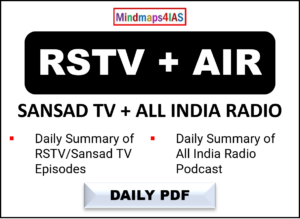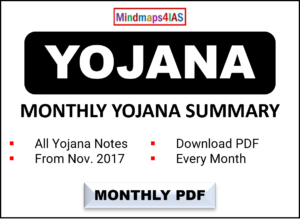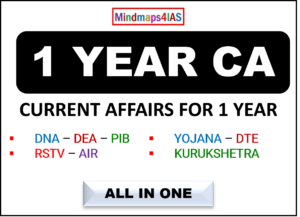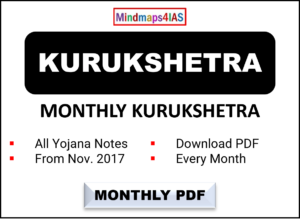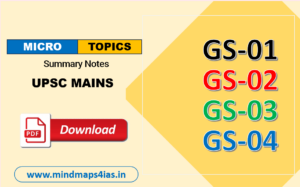Relevance: The Ken-Betwa River Linking Project (KBLP) is significant for understanding India’s approach to water resource management, especially concerning drought mitigation, irrigation, and inter-state water sharing. It is relevant for both the UPSC Prelims and Mains examinations, particularly in topics related to environmental policy and infrastructure development.
Why in the News?
On December 25, 2024, Prime Minister Narendra Modi laid the foundation stone for the Ken-Betwa River Linking National Project (KBLP) in Khajuraho, Madhya Pradesh. This event coincided with the 100th birth anniversary of former Prime Minister Atal Bihari Vajpayee. The project aims to transfer water from the Ken River to the Betwa River, both tributaries of the Yamuna.
Key Takeaways
- Project Overview:
- The KBLP includes a 221 km link canal, featuring a 2-km tunnel.
- It is designed to provide annual irrigation to 10.62 lakh hectares of land (8.11 lakh ha in Madhya Pradesh and 2.51 lakh ha in Uttar Pradesh).
- The project will supply drinking water to approximately 62 lakh people and generate 103 MW of hydropower and 27 MW of solar power.
- National Perspective Plan:
- KBLP is the first project under the National Perspective Plan for interlinking rivers, prepared in 1980.
- This plan includes 16 projects under its peninsular component and 14 links proposed under the Himalayan rivers development plan.
- Phases of Implementation:
- Phase I: Involves constructing the Daudhan Dam complex, including subsidiary units like the Low-Level Tunnel, High-Level Tunnel, Ken-Betwa Link Canal, and powerhouses.
- Phase II: Comprises three components — Lower Orr Dam, Bina Complex Project, and Kotha Barrage.
- Historical Context:
- The idea for linking the Ken with the Betwa gained momentum in August 2005 when a tripartite memorandum of understanding was signed among the Central Government and the two states.
- In 2008, KBLP was declared a National Project and included in the Prime Minister’s package for developing the drought-prone Bundelkhand region.
- A memorandum of agreement was signed on March 22, 2021, between the Ministry of Jal Shakti and the governments of Madhya Pradesh and Uttar Pradesh for project implementation.
- Geographical Focus:
- The project is located in Bundelkhand, affecting 13 districts across Uttar Pradesh and Madhya Pradesh.
- It aims to benefit water-scarce regions, particularly districts like Panna, Tikamgarh, Chhatarpur, Sagar, Damoh, Datia, Vidisha, Shivpuri, Raisen in Madhya Pradesh, and Banda, Mahoba, Jhansi, Lalitpur in Uttar Pradesh.
Environmental and Social Impact
- Deforestation Concerns:
- The project has faced criticism for its potential environmental impacts, particularly large-scale deforestation within Panna National Park and Tiger Reserve.
- Approximately 98 sq km of Panna National Park will be submerged due to the dam construction.
- Wildlife Impact:
- The area has historical significance for tigers; local extinction occurred in 2009 due to habitat loss.
- Displacement Issues:
- The dam will displace around 5,228 families in Chhatarpur district and 1,400 families in Panna district, leading to protests over inadequate compensation.
- Hydrological Studies:
- Experts have called for transparency regarding hydrological data on Ken’s surplus water to facilitate thorough reviews.
- A study by IIT Bombay indicated that moving large quantities of water could adversely affect land-atmosphere interactions and potentially lead to a rainfall deficit of up to 12% in September.
Beyond the Nugget: Other River Linking Projects
- Modified Parbati-Kalisindh-Chambal-ERCP Link Project:
- In January 2024, Rajasthan and Madhya Pradesh signed an MoU with the Union Ministry of Jal Shakti for this project.
- It integrates long-pending river link projects with the Eastern Rajasthan Canal Project (ERCP), aiming to provide drinking water across 13 districts.
- National Perspective Plan (NPP):
- Formulated in 1980 to transfer water from surplus basins to deficit areas.
- The National Water Development Agency (NWDA) has identified 30 links under this plan.
Interlinking Projects under the National Perspective Plan
| Name | States Benefited |
|---|---|
| Mahanadi (Manibhadra) – Godavari (Dowlaiswaram) link | Andhra Pradesh and Odisha |
| Godavari (Polavaram) – Krishna (Vijayawada) link | Andhra Pradesh |
| Godavari (Inchampalli) – Krishna (Nagarjunasagar) link | Telangana |
| Krishna (Almatti) – Pennar link | Andhra Pradesh and Karnataka |
| Par-Tapi-Narmada link | Maharashtra and Gujarat |
| Bedti – Varda link | Karnataka |
The Ken-Betwa River Linking Project represents a significant initiative aimed at addressing water scarcity issues in Bundelkhand while also raising critical environmental concerns regarding biodiversity loss and displacement. Understanding such projects is crucial for UPSC aspirants as they reflect India’s strategies for sustainable development amid growing challenges related to water resources management.




